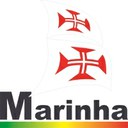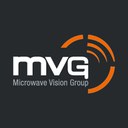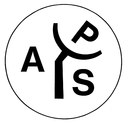Microwave imaging for medical diagnostics: from theory to implementation
P. Kosmas
King’s College London, UK
 P. Kosmas, MIEEE, joined King’s College London (KCL) as a Lecturer in 2008, and is currently a member of KCL’s Centre for Telecommunications (CTR) within the Department of Informatics. Prior to his appointment, he held research positions at the Center for Subsurface Sensing and Imaging Systems (CenSSIS), Boston, USA, the University of Loughborough, UK, and the Computational Electromagnetics Group, University of Wisconsin-Madison, USA. His expertise in microwave imaging includes radar and tomographic methods, and he has pioneered the use of time reversal for microwave breast cancer detection. He has over 50 journal and conference publications on microwave imaging and related areas. He is also the co-founder of Mediwise Ltd, an award-winning UK-based SME focusing on the use of EM waves for medical applications. Beyond microwave medical imaging, Dr Kosmas’ research interests include computational electromagnetics with application to other areas of subsurface sensing, antenna design, and inverse problems theory and techniques. He has received UK private (FABW charity) and public (Innovate UK) funding for projects in microwave sensing and imaging, and signal processing for land-mine detection. He has taught undergraduate and graduate courses on EM theory, antennas and propagation, and stochastic processes. He is a regular contributor and reviewer for various IEEE Transactions journals, including Antennas and Propagation, Biomedical Engineering and Medical Imaging. He is a member of the management committee of COST Action MiMed (TD1301) and leader of the Working Group on “Widespread adoption of microwave imaging devices in clinical practice and framework for their commercialisation”.
P. Kosmas, MIEEE, joined King’s College London (KCL) as a Lecturer in 2008, and is currently a member of KCL’s Centre for Telecommunications (CTR) within the Department of Informatics. Prior to his appointment, he held research positions at the Center for Subsurface Sensing and Imaging Systems (CenSSIS), Boston, USA, the University of Loughborough, UK, and the Computational Electromagnetics Group, University of Wisconsin-Madison, USA. His expertise in microwave imaging includes radar and tomographic methods, and he has pioneered the use of time reversal for microwave breast cancer detection. He has over 50 journal and conference publications on microwave imaging and related areas. He is also the co-founder of Mediwise Ltd, an award-winning UK-based SME focusing on the use of EM waves for medical applications. Beyond microwave medical imaging, Dr Kosmas’ research interests include computational electromagnetics with application to other areas of subsurface sensing, antenna design, and inverse problems theory and techniques. He has received UK private (FABW charity) and public (Innovate UK) funding for projects in microwave sensing and imaging, and signal processing for land-mine detection. He has taught undergraduate and graduate courses on EM theory, antennas and propagation, and stochastic processes. He is a regular contributor and reviewer for various IEEE Transactions journals, including Antennas and Propagation, Biomedical Engineering and Medical Imaging. He is a member of the management committee of COST Action MiMed (TD1301) and leader of the Working Group on “Widespread adoption of microwave imaging devices in clinical practice and framework for their commercialisation”.
L. Crocco
CNR-IREA, Italy
 Lorenzo Crocco, SM-IEEE, was born and educated in Italy. Since 2001, he has been a Research Scientist with the Institute for the Electromagnetic Sensing of the Environment, National Research Council of Italy (IREA-CNR). His scientific activities mainly concern theoretical aspects and applications of electromagnetic scattering, with a focus on diagnostic and therapeutic uses of electromagnetic fields, through-the-wall radar and GPR. On these topics, he has published more than 60 papers in peer-reviewed journals, given keynote talks at international conferences and led or participated to Italian and European research projects. He has served as Guest Editor for international journals and co-chaired two international conferences on GPR. He is in the Editorial Board of the International Journal of Antennas and Propagation. He is member of the management committee of COST Action MiMed (TD1301) and leader of the Working Group on “New techniques and emerging applications for microwave imaging”. Dr. Crocco is a Fellow of The Electromagnetics Academy (TEA). He was the recipient of the "Barzilai" Award for Young Scientists from the Italian Electromagnetic Society (2004). In 2009, he was awarded as one of the best under 40 scientists of CNR. In 2014, he has been habilitated as professor of Electromagnetic Fields by the Italian Ministry of Research and University. From 2009 to 2012, he has adjunct professor at the Mediterranea University of Reggio Calabria, Italy, teaching undergraduate and Master courses of Electromagnetic Waves and Non-invasive EM Diagnostics. Since 2013, he is has been an instructor in courses organized by the European School of Antennas (ESOA), giving lectures on methods in inverse scattering and biomedical application of microwave imaging.
Lorenzo Crocco, SM-IEEE, was born and educated in Italy. Since 2001, he has been a Research Scientist with the Institute for the Electromagnetic Sensing of the Environment, National Research Council of Italy (IREA-CNR). His scientific activities mainly concern theoretical aspects and applications of electromagnetic scattering, with a focus on diagnostic and therapeutic uses of electromagnetic fields, through-the-wall radar and GPR. On these topics, he has published more than 60 papers in peer-reviewed journals, given keynote talks at international conferences and led or participated to Italian and European research projects. He has served as Guest Editor for international journals and co-chaired two international conferences on GPR. He is in the Editorial Board of the International Journal of Antennas and Propagation. He is member of the management committee of COST Action MiMed (TD1301) and leader of the Working Group on “New techniques and emerging applications for microwave imaging”. Dr. Crocco is a Fellow of The Electromagnetics Academy (TEA). He was the recipient of the "Barzilai" Award for Young Scientists from the Italian Electromagnetic Society (2004). In 2009, he was awarded as one of the best under 40 scientists of CNR. In 2014, he has been habilitated as professor of Electromagnetic Fields by the Italian Ministry of Research and University. From 2009 to 2012, he has adjunct professor at the Mediterranea University of Reggio Calabria, Italy, teaching undergraduate and Master courses of Electromagnetic Waves and Non-invasive EM Diagnostics. Since 2013, he is has been an instructor in courses organized by the European School of Antennas (ESOA), giving lectures on methods in inverse scattering and biomedical application of microwave imaging.
Abstract
Medical applications of electromagnetic (EM) fields in the microwave frequency range are an emerging topic for the EURAAP community, as witnessed by several successful sessions held at recent EUCAP and IEEE AP conferences. The ever-increasing need of introducing microwave engineers with diverse backgrounds to the theory and practical implementation of advanced imaging and inversion methods has become a major objective for the new COST Action TD1301 "MiMed", which aims to accelerate the development and clinical application of microwave medical imaging methodologies. To this end, this short course aims to not only introduce the audience to this complex and stimulating topic, but also to provide hands-on tools that would enable interested researchers to embark on this field.
The course will focus on microwave imaging methods as applied in various clinical applications, such as breast cancer detection and screening, stroke and trauma detection and imaging, as well as therapy monitoring and planning. Emphasis will be given on microwave tomography, which aims to estimate the spatial distribution of dielectric properties in a tissue region by solving an EM inverse scattering problem. Several EM inverse scattering methods have been proposed in recent years for this purpose, such as conjugate gradient techniques and Gauss-Newton (GN) optimization algorithms. The short course is meant for a potential large audience (e.g. MiMed participants, as well as students from various groups worldwide). In particular, by paving the path from the understanding of the basic mathematical problems to their practical implementation into computational tools, we are confident that we will motivate new research in this important area.
The material will be mostly covered with PowerPoint slides, but the instructors will pay specific attention to answering questions and explaining how the (sometimes complex) mathematical concepts can be implemented in practice via numerical codes. As such, a sufficient time is foreseen for an open interaction between the instructors and the trainees.
The general course’s structure is as follows:
- Part I: Introduction & Theoretical Background
This part will first introduce emerging microwave medical imaging applications, which are based on the methods presented in the course. This introduction will emphasize the need for microwave imaging and will motivate the material covered in the course. We will then present and explain the various challenges in microwave imaging by providing a basic general theoretical framework for inverse scattering problems. - Part II: From theory to implementation - the microwave imaging practitioner toolbox, with examples
This main part of the course will first introduce linear model-based inversion methods, which are easier to implement and application-specific. We will argue the usefulness of these methods in clinical applications such as differential imaging for clinical follow-up and contrast-enhanced microwave imaging. Then, more powerful but challenging non-linear microwave tomography methods will be analysed, focusing on contrast-source inversion (CSI) and Gauss-Newton (GN) methods. The methods will be applied to quantitative imaging of human tissue dielectric properties. Advanced topics such as regularization by projection and sparsitypromoting algorithms will also be presented. The attendees must have a good understanding of EM theory and a solid background in mathematics. The instructors aim to make the topic understood to non-experts, and therefore students at PhD level will particularly benefit from this course.


































